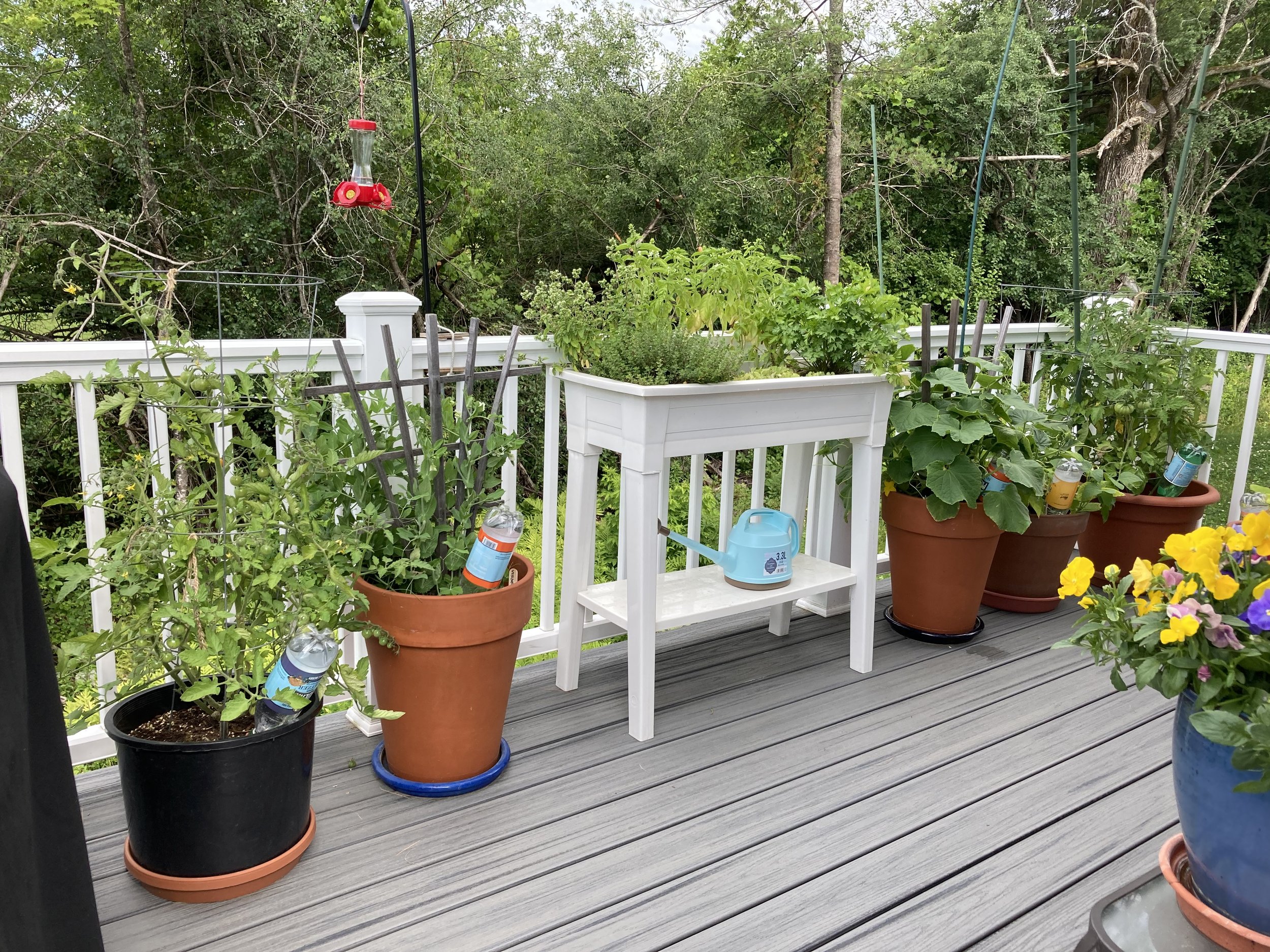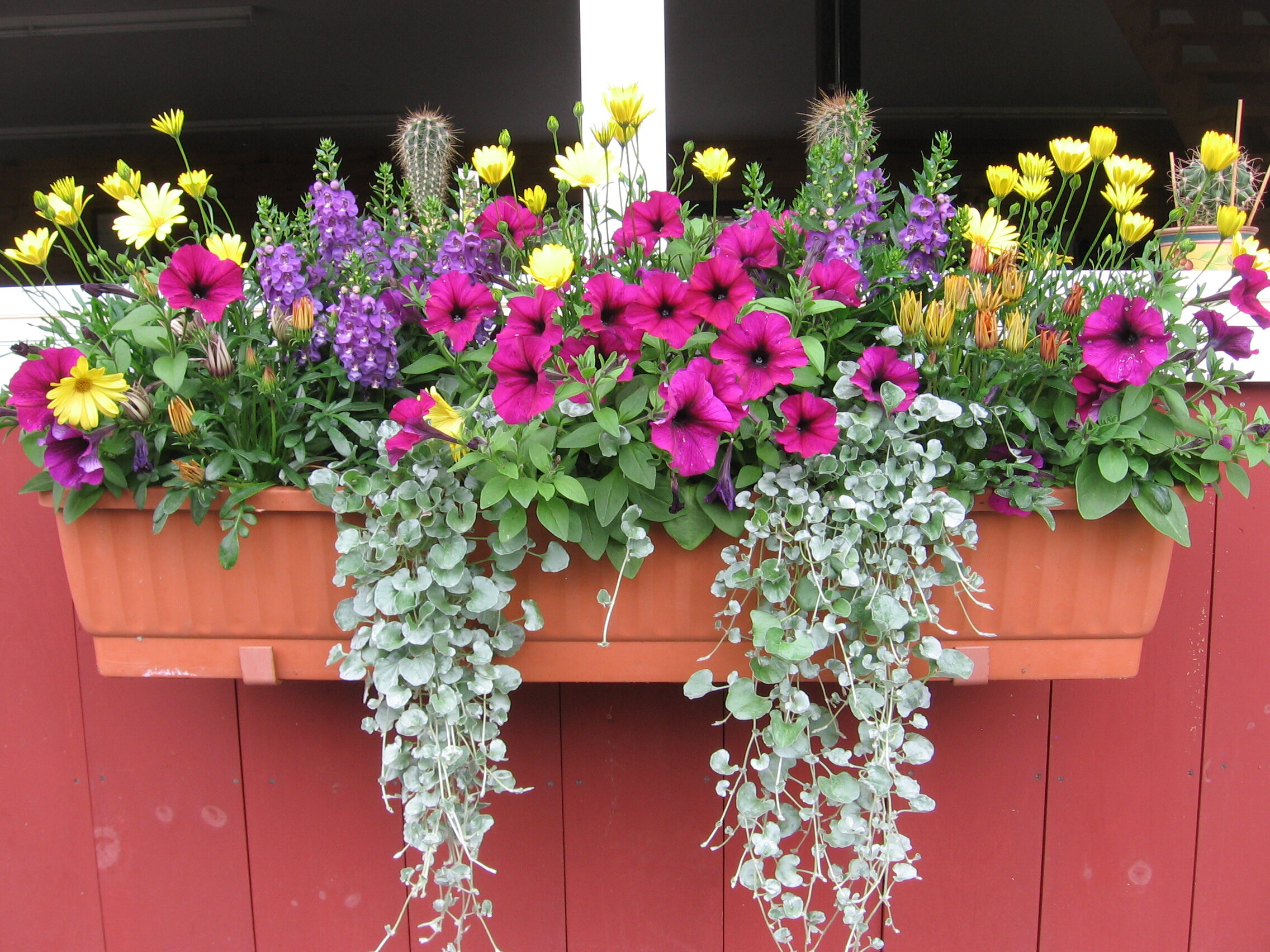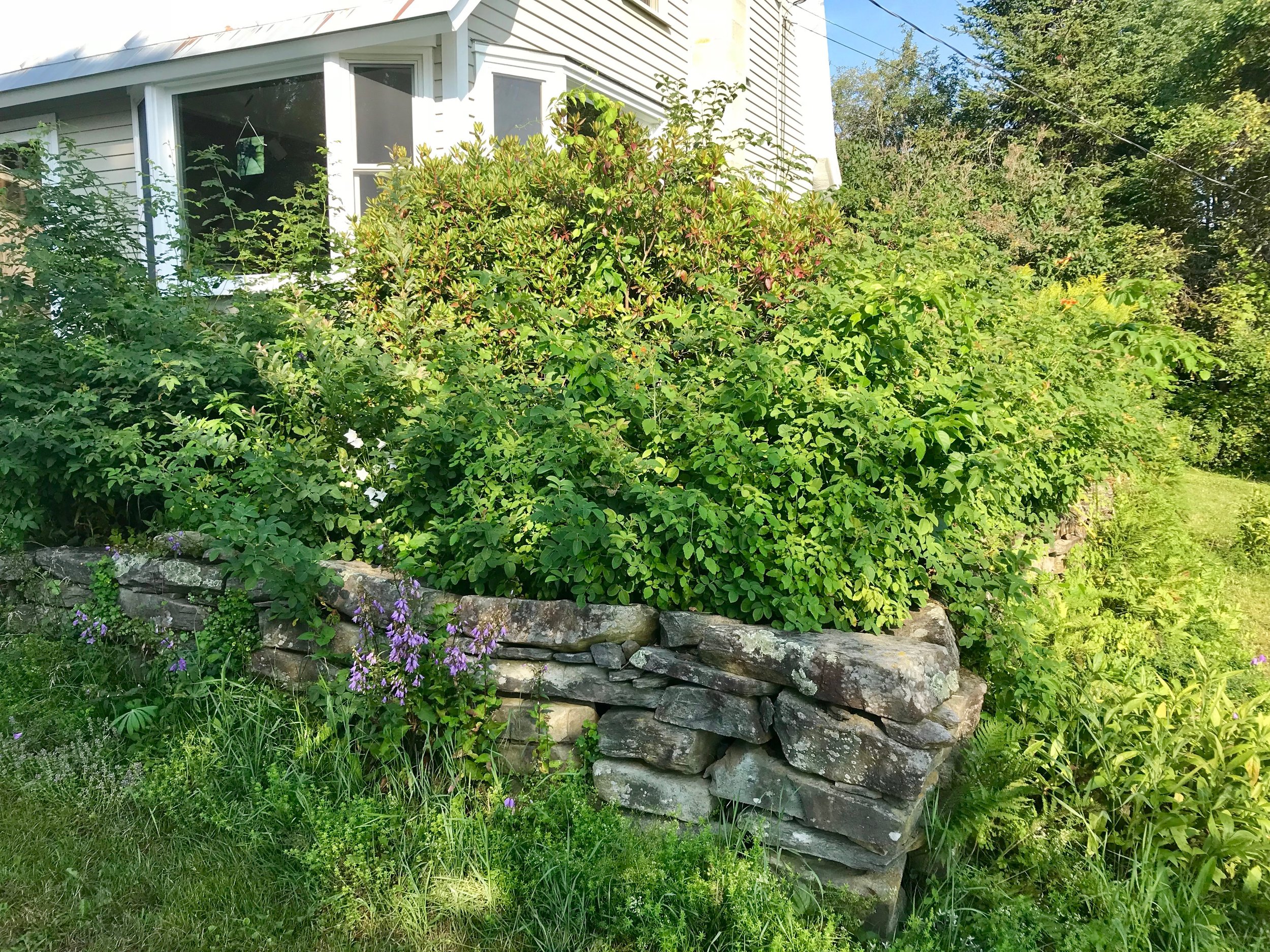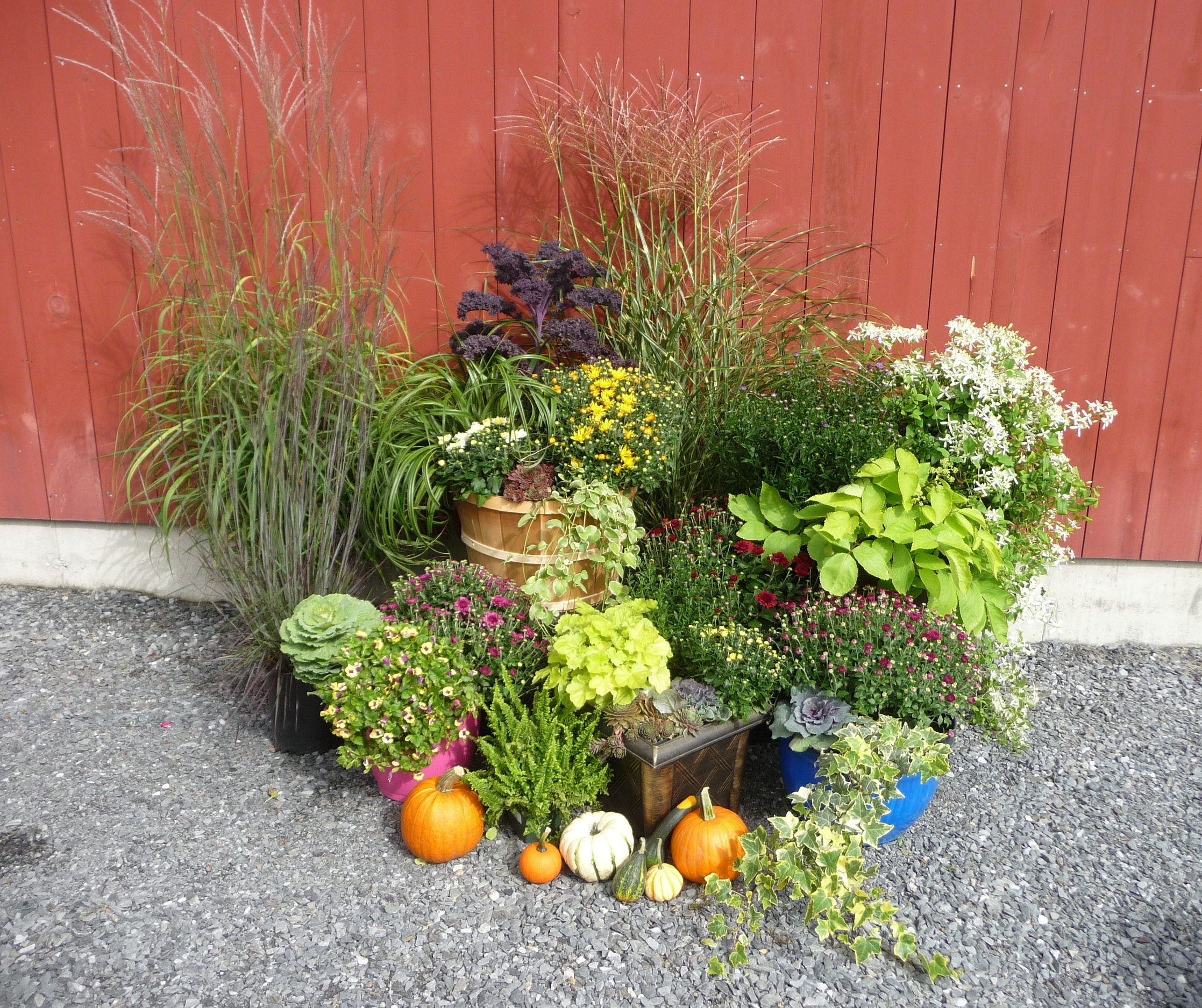In the Spring, we dug into container plantings (no pun intended!), and I wrote that I wanted to plant a container vegetable garden on my sunny deck. Pots, containers, and my daughter’s small raised bed were filled with potting soil, planted with seeds and started plants, fitted with small trellises and tomato cages, and we were ready to grow! We have already enjoyed baby Salad bowl lettuce and Sungold cherry tomatoes, as well as herbs from our pizza garden: oregano, basil, thyme, and flat leaf parsley. So nice to walk out my kitchen door and pick fresh from the garden for salads and cooking.
The container veggie garden comes into its own. producing tasty lettue, tomatoes, peas and beans, with more veggies to come.
Ease of access for a container vegetable garden is important, as they require additional water and water-soluble fertilizer. I am fertilizing my plants every 7-14 days now with Jack’s All Purpose Water Soluble Fertilizer (20-20-20), and watering almost daily during this dry spell. Terra cotta water spikes with plastic bottles help keep the soil damp. Rain from my roof collected in a rain barrel eases the burden on my well.
My rain barrel is a converted compost tea container. Collecting rainwater eases the pressure on my well during this year’s dry, hot summer.
A container vegetable garden can be large or small, depending on your space. One packet of seeds was more than sufficient for each container. All pots must have holes in the bottom for drainage to prevent root rot. Some vegetables require fencing or supports, like peas, beans, and cucumbers, so trellises and a deck railing provide support. The yield will be smaller as plants were thinned to one to three per very large pot. Tomato plants were one plant per pot. Seeds were planted in all-purpose planting soil. A raised deck will keep unwanted animal thieves from your garden, but a patio container vegetable garden will need fencing or critter deterrent spray to keep deer, woodchucks, bears, and others from damaging your harvest. I use Plantskydd animal deterrent, which is effective for all vegetables and ornamental plants, however, it is quite smelly.
Cukes and Green Beans will utilize the deck railing as they grow.
The garden was an experiment for me as past vegetable gardens had been in-ground with fencing. I don’t have to worry about animals or weeds in my container garden; however, the yield will be smaller. The ease of care so far is wonderful; however, the success of the squash, pumpkins, and cucumbers, which need space to climb and spread, may take more space on the deck than planned. To me, this is part of the charm of gardening!
This week we harvested peas, string beans and tomatoes. Cucumbers grow larger every day and will soon be ready for harvest. Our pizza continer garden contiues to provide delicious fresh herbs for my husband’s homemade pizzas. As summer progresses we savor the fresh flavors of our container grown veggies.
Mid-July: the container garden is already producing string beans, peas and tomatoes. Cucumbers and summer squash are ripening now. along with Mortgage Lifter heirloom tomatoes, Were looking forward to autumn, when the Jack be Nimble mini pumpkins will be ripe.













































































